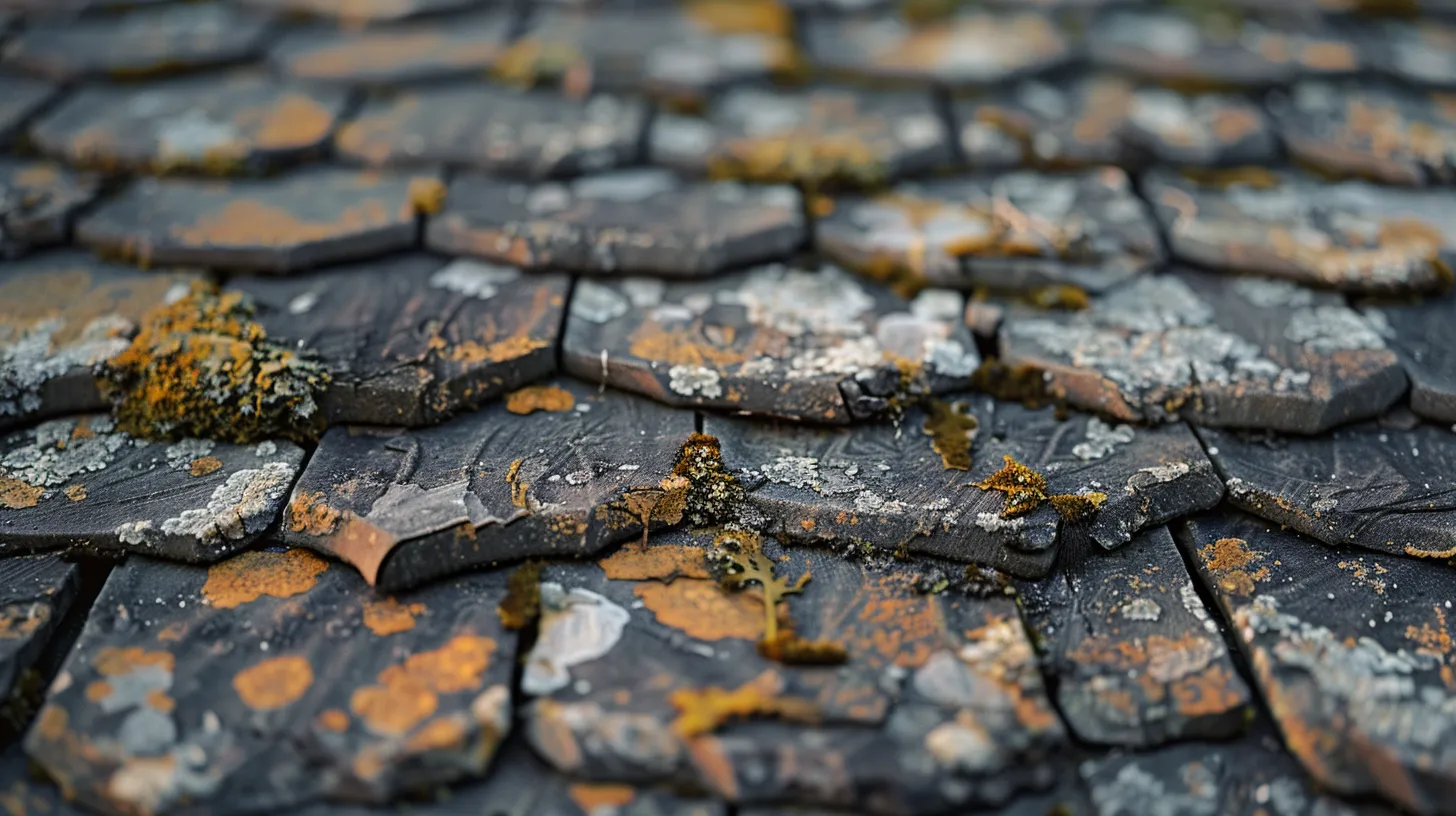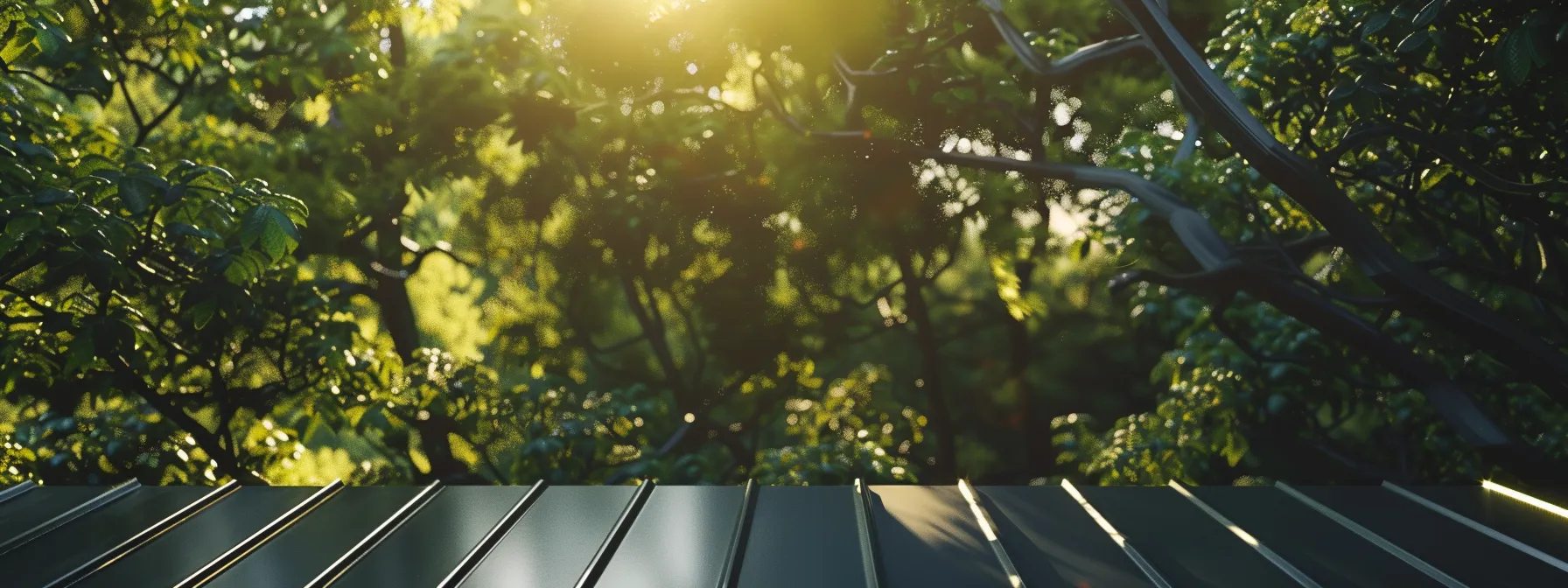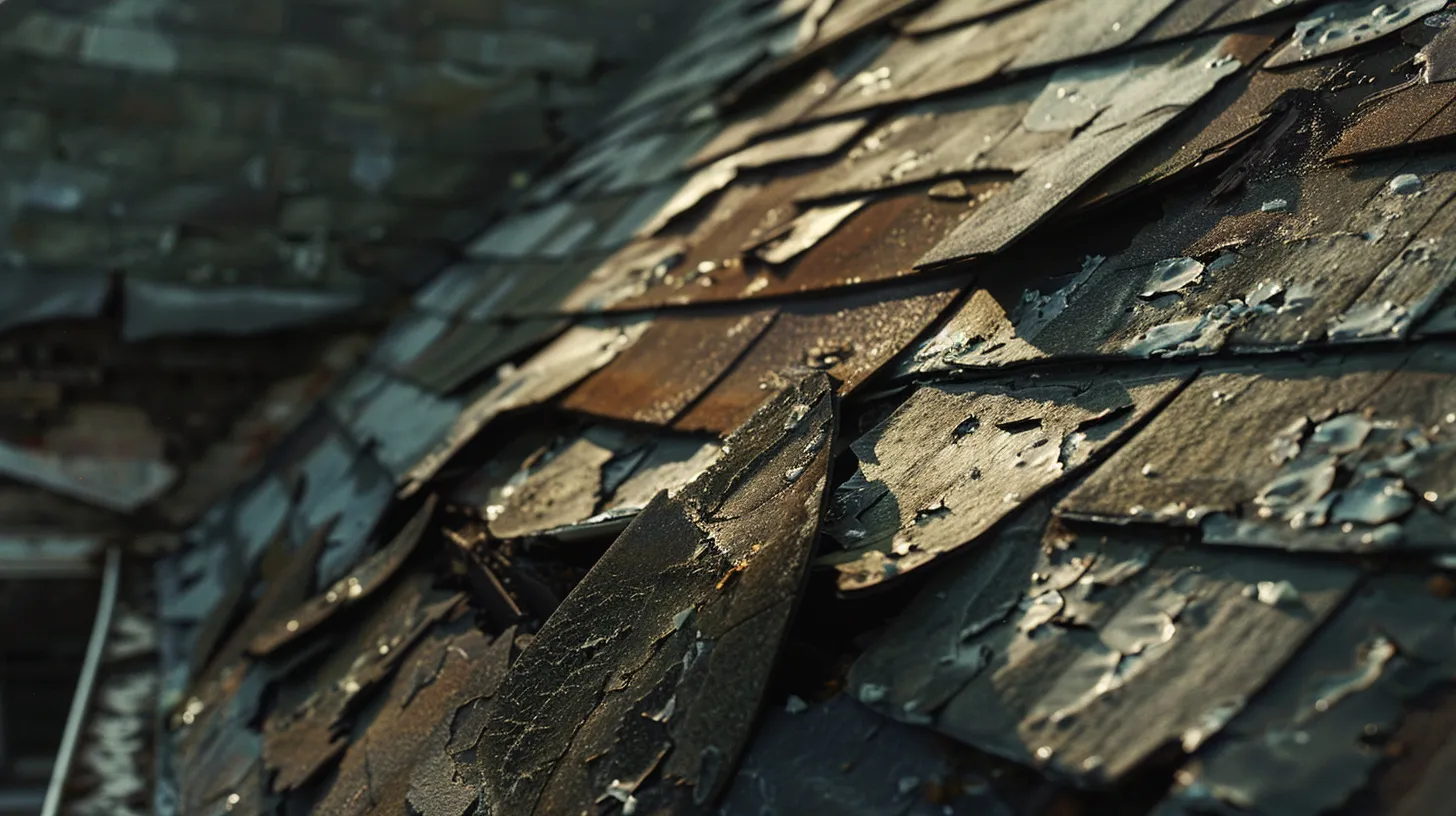
Identifying Aging Roofs: Signs of Wear and Tear
Identifying Roof Wear: Key Signs of Aging
Have you noticed signs of wear on your roof that leave you worried about your home’s condition? This post explains clear indicators of roof aging, including water damage and a weakening structure. You will learn to assess these issues and know exactly when to seek help from trusted professionals like Platinum Home Design, LLC. Using these insights, you can protect your home and avoid expensive repairs.
Key Takeaways
- Regular roof inspections catch early signs of wear on shingles, granules, and flashing
- Timely repairs stop minor issues from evolving into major structural damages
- Water intrusion leads to stained ceilings and weakened areas around the roof
- Professional evaluations guide repair decisions between local fix-ups and complete replacement
- Proper gutter and flashing care ensures effective water drainage and roof strength
Understanding the Importance of Roof Condition
You inspect your roof often because it forms your home’s first barrier against outside elements. You maintain it regularly to ensure accessibility for routine service and repairs.
Your roofing system frequently features bitumen, a material known for its durability and performance. You monitor its condition closely to catch early signs of aging before issues arise.
A compromised roof can directly affect your ceiling, leading to visible stains and reduced strength. You watch for any evidence of a roof leak that might weaken the ceiling over time.
Minor damages, if left unattended, can develop into serious water damage that puts your home at risk. You address any concerns promptly to preserve the overall integrity of your structure.
You know your roof guards your home against the elements. Now, you notice simple signs that mark its aging.
Key Indicators of Roof Aging
You monitor your roof to spot visible wear on shingles, granule loss, and any cracking or curling that signals early issues. You also check for rust or corrosion and roof flashing deterioration. You may notice hints of condensation and moisture near your skylight, attic, or following roof storm damage, helping you act promptly.
Visible Wear and Tear on Shingles
You check your roof regularly and notice that worn shingles may show signs such as curling edges or a subtle stain, which might point to early water infiltration. You know that while pet insurance covers your animal’s needs, any issue with your roof installation should be evaluated by a skilled roofer to keep your home secure.
You spot a stain on an exposed shingle and understand that even minor damage can open the door for gradual infiltration over time. You benefit from the insight of an experienced roofer who can recommend timely repairs to prevent further complications with your roof installation.
Granule Loss and Its Implications
You notice that granule loss on your roof shingle signals that weather exposure and ongoing wear have compromised its protective layer, sometimes after a winter storm. This loss creates openings that let moisture in, fostering mildew and affecting adjacent areas like your siding.
You act by scheduling a professional inspection when granule loss becomes apparent to prevent further damage. Recognizing these early signs allows you to take prompt measures that maintain the durability of your roof shingle and protect the overall structure of your home.
Cracks and Curling in Shingles
You notice cracks forming in your wood shingle and roof tiles after a strong storm, which may point to weakened materials over time. You watch for curling signs that can compromise the waterproof barrier and lead to further complications if left unchecked.
You may also find that damage near your copper flashing requires careful attention to prevent additional deterioration. You refer to your insurance policy for guidance on repair options and seek expert advice to keep your roof in proper condition.
Signs of Rust or Corrosion
You may notice rust forming along metal edges and joints, signs that your roof’s protective coatings have worn thin. When you live in a particular zip code with harsher weather, you might decide to replace corroded components while ensuring proper ventilation to reduce moisture build-up during daylight hours.
You also observe that moss growth can trap moisture against metal surfaces, which accelerates rust and erosion. You seek professional advice to improve ventilation and determine when it is best to replace affected parts, keeping your roof in optimal condition under varying daylight exposures.
Deterioration of Roof Flashing
You inspect your roof flashing routinely to find signs that extreme weather may have weakened its integrity, with small gaps leading to leaks that could cause an unwanted odor indoors. You perform regular roof inspections and notice any irregularities as visual cues for scheduling an inspection:
You act quickly when you observe deterioration in the flashing, arranging a professional inspection to mitigate leaks before they cause further damage. You rely on expert advice to repair flashing issues, safeguarding your home against moisture and persistent odor.
Your roof tells its history in every chipped shingle and worn edge. Keep your eye out for water marks that warn you of leaks hidden from sight.
Recognizing Water Damage Related to Aging
You monitor your roofs for water damage, including stains on ceilings and walls, mold growth in attic spaces, and damp insulation and its effects. You know that a secure bond in your roofing system can help avoid a costly roof replacement and influence your home insurance. Each sign guides you to maintain reliable roofing and overall home strength.
Stains on Ceilings and Walls
You notice stains on your ceilings and walls as clear signals of water intrusion from a weakened roofing system. Damage to your asphalt shingle from extensive snow buildup can cause leaks at the eaves, increasing the risk of interior problems.
When you observe these marks, you act by having a professional inspect your roof to address any emerging issues. In some cases, you may contact your insurance company for guidance on repair options if the damage continues to spread.
Mold Growth in Attic Spaces
You notice that mold growth in your attic may point to water entering through your roof, especially following strong hail that causes roof hail damage affecting flashing. You also see that problems like these can impact energy efficiency, and you understand that early warning signs allow you to take action:
You act quickly when you spot mold development, as this sign may reveal further water damage and compromised flashing. You rely on expert advice to assess hail impact on your roof and repair any issues that may drain energy efficiency, ensuring your attic stays secure.
Damp Insulation and Its Effects
You review your insulation for damp spots that may result from wind-driven moisture or shingles hail damage, and you understand that these conditions contribute to algae and mold formation. Damp insulation issues not only reduce the overall durability of your roof system but also cut into its longevity by compromising protection:
- Conduct regular inspections to catch early signs of moisture
- Monitor for discoloration linked to algae or mold
- Assess damage after strong winds or hail events
- Schedule professional evaluations to address any concerns
You can rely on expert guidance to correct any detected issues, ensuring your insulation stays dry and effective. Addressing these conditions promptly helps you preserve the strength and lifespan of your roofing system.
Water damage shows the effects of time. You now examine the roof structure to spot any hidden faults.
Assessing Roof Structural Integrity
You spot a sagging or uneven roof line along wood elements and curling edges after severe weather. You observe gutter issues disrupting proper water flow, which might affect your warranty. Roof repair services can resolve these problems. This section provides clear, practical advice on both structural shifts and water flow challenges that could signal aging roof wear.
Sagging or Uneven Roof Line
You observe a sagging or uneven roof line that may point to potential issues from storm damage. This roof damage sign calls for timely guidance from a seasoned roofing contractor, and you may need a detailed roof inspection to assess areas including the chimney:
- Review the roof sheathing for signs of sagging
- Inspect the connection points around the chimney
- Document roof damage signs for discussion during your roof inspection
You notice that irregularities along the roof line can lead to broader structural challenges if left unattended. You decide to act promptly by contacting a reliable roofing contractor to perform a thorough roof inspection, ensuring that every affected area, particularly near the chimney, is carefully evaluated and addressed.
Gutter Issues and Water Flow Problems
You notice that clogged or misaligned gutters cause water to back up, forming a dam that forces rainwater over the side and damages the tile on your roof. You also recognize that recurring issues could indicate the need for roof repair replacement to protect the integrity of your residential roof.
If you observe water pooling along the eaves due to gutter problems, you understand that this may stress the structure and eventually lead to costly repairs. You consider expert guidance on whether a full roof replacement is necessary as part of your strategy to maintain a secure residential roof.
You have seen time and weather take their toll on your roof. Skilled inspectors now examine every detail to keep your home strong.
Utilizing Professional Roof Inspections
You benefit from routine roof assessments that evaluate drainage, spot pest concerns, and identify roof problems. Professionals examine debris buildup and other roof issues, offering clear insights on required repairs. Their expert evaluations prepare you to keep your roof in top condition and avoid costly setbacks.
Benefits of Regular Roof Assessments
You benefit from regular roof assessments because you can identify early signs of wear and tear that may lead to roof damage or a leak. When you use a ladder to access difficult areas safely, you notice minor issues before they require roof repair. This proactive evaluation helps you plan necessary actions against potential damage:
- Identifying missing or curling shingles that signal early wear and tear
- Detecting minor leaks before they evolve into significant roof damage
- Spotting rust or corrosion that may need prompt roof repair
- Observing conditions safely using a ladder during inspections
Regular assessments empower you to act quickly and schedule roof repairs to prevent escalating issues. By obtaining practical insights from professional inspections, you ensure that the overall condition of your roofing system remains secure and reliable.
What Professionals Look for During Inspections
You work with a qualified professional who inspects every detail of your roofing system to spot early signs of wear. They check for shingle damage, cracked tiles, and other issues that could allow water intrusion into your basement or go against your repair policy guidelines:
- Examination of shingle integrity for cracks and curling
- Assessment of roof flashing, gutter alignment, and drainage systems
- Evaluation of potential water entry points affecting the basement
- Review of criteria outlined in your policy for necessary repairs
You benefit from these insights as they guide you in setting up timely repairs and maintenance to retain your roof’s strength. Clear, actionable recommendations help you keep your roof performing reliably over time.
Your roof inspection shows you the real state of your home’s cover. Many homeowners carry mistaken views on how a roof truly ages.
Common Misconceptions About Roof Aging
You may have heard claims that every roof must be replaced after a certain period and that small fixes count as full repairs. This section breaks down myths about roof lifespan and clears up repair versus replacement misunderstandings. You receive clear guidance to help protect your roof and keep it performing reliably over time.
Myths Surrounding Roof Lifespan
You may have heard that a roof must be replaced after a fixed number of years, a belief that ignores the role of regular maintenance in extending roof life. You understand that thorough inspections and attentive care reveal the true condition of your roofing system, making age just one part of the overall picture.
You might also think that minor issues signal an inevitable roof failure, even when they can be managed with prompt repairs. You realize that a detailed professional assessment helps you decide when simple fixes are sufficient instead of a complete replacement, ensuring your roofing system stays secure.
Misunderstanding of Repair vs. Replacement
You might assume that any sign of roof wear calls for complete replacement rather than targeted repairs. You often see minor damage and feel pressured to opt for a full overhaul, yet careful roof inspections show that a focused repair may be sufficient:
You depend on expert evaluations to decide if a repair will keep your roofing system secure or if replacement is required to solve long-term issues. You receive clear guidance that helps you choose cost-effective measures and maintain a safe, strong roof.
Old myths about roof aging miss the real risk you face. If you ignore early signs, small faults turn into heavy, costly burdens.
The Long-Term Impact of Ignoring Roof Aging Signs
You face high repair expenses if you postpone upkeep. Ignoring early roof aging signs can cause your home’s structure to weaken over time. This section outlines delayed maintenance costs and a greater risk of structural damage, giving you clear pointers to act quickly and avoid extra repair expenses later.
Cost Implications of Delayed Maintenance
You may see rising repair bills if you delay routine roof maintenance. When early signs of roof wear are ignored, minor issues can evolve into serious problems that require extensive repairs and more costly materials.
You can manage your repair expenses by addressing roof aging indicators as soon as they appear. Scheduling regular inspections and taking prompt action helps you avoid the cost implications of delayed maintenance while keeping your home safe and secure.
Increased Risk of Structural Damage
You understand that postponing regular maintenance can allow minor roof deterioration to spread, weakening essential support elements. Over time, ignored wear can cause the roof structure to sag and shift, which may lead to costly repairs and compromise your home’s stability.
You notice that water intrusion, combined with aging materials, can further deteriorate the underlying structure. Addressing these issues promptly with professional roof repair helps you maintain a safe and resilient home environment.
Frequently Asked Questions
What are common roof aging indicators?
Common roof aging indicators include curling or missing shingles, granule loss, visible cracks, and water stains in the attic that often signal the need for repairs or professional evaluation.
How can water damage reveal roof wear?
You can spot roof wear when water damage exposes cracked or missing shingles, weakened underlayment, and loose fasteners. Observing these issues should prompt you to arrange a professional roof assessment before problems intensify.
Why does maintaining roof condition matter?
Regular roof checks protect your home’s value, prevent water damage, and lower energy bills. You avoid costly repairs by addressing wear early with help from our team at Platinum Home Design, LLC in Chantilly, VA.
When should you schedule a professional roof inspection?
If you’re in Chantilly, VA, schedule your professional roof inspection annually during mild weather and after harsh storms to spot issues early and maintain your home’s condition.
What risks result from ignoring roof wear signs?
When you ignore signs of roof wear, you risk water intrusion, expensive repairs, structural damage, and reduced home safety that can ultimately lower your property’s value.
Conclusion
You monitor your roof closely to catch early signs of wear that may lead to larger issues down the line. You notice problems like loose or curling shingles, granule loss, and rust on metal parts as indicators that immediate attention is needed. You schedule timely repairs to stop minor issues from turning into expensive fixes that affect your home’s strength. You maintain an active approach to roof care, ensuring your roofing system remains secure and your living space stays protected.




